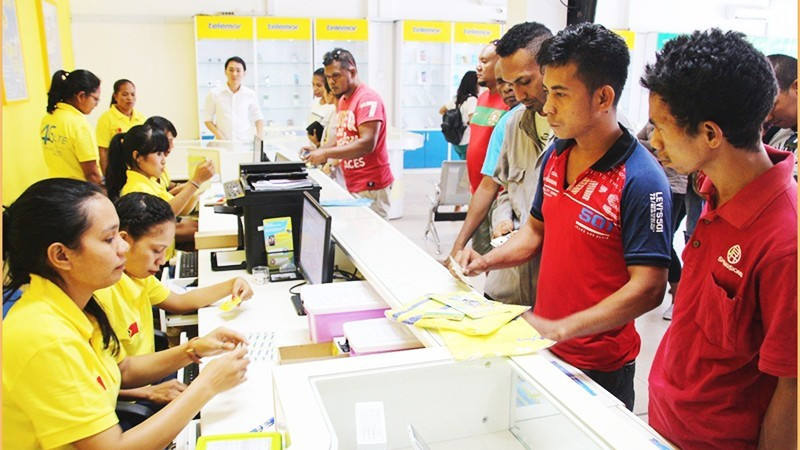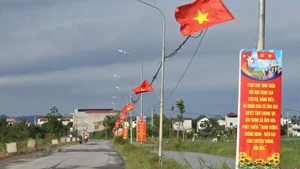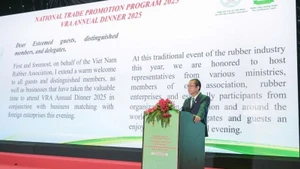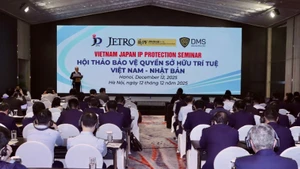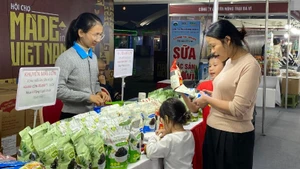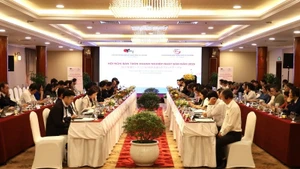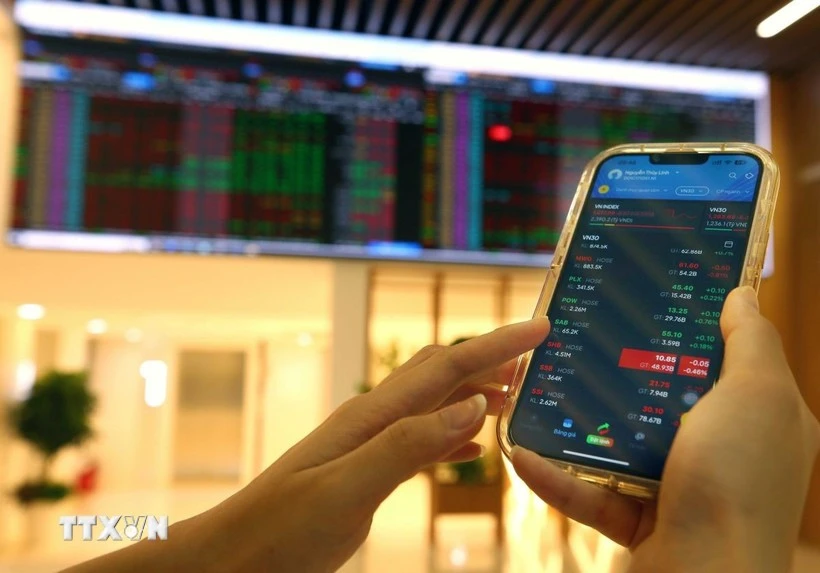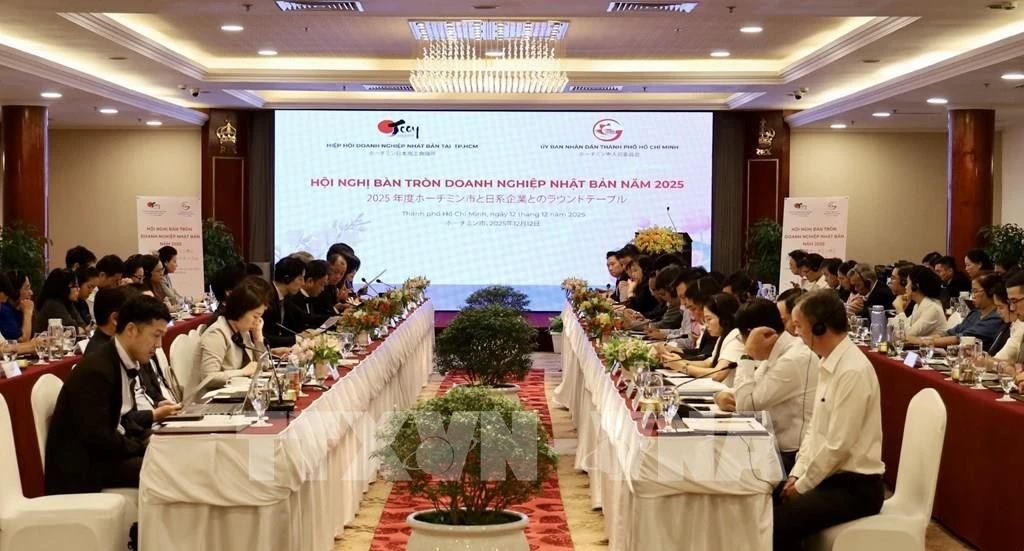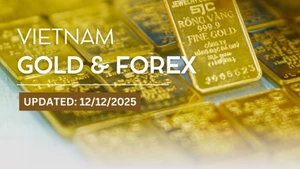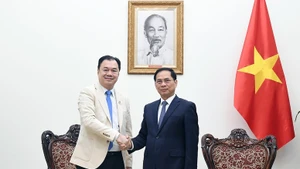In 2006, Viettel embarked on its international journey with Metfone in Cambodia, quickly followed by Unitel in Laos in 2008, where it soon secured the top position in both markets. Since then, Viettel has expanded into Haiti (2010), Mozambique (2012), and several other countries across Africa, Asia, and Latin America.
After nearly two decades abroad, Viettel now operates in almost 10 countries, generating billions of USD in international revenue annually and standing as a symbol of Viet Nam’s success in outward foreign direct investment (OFDI).
Climbing to greater heights
It is not only Viettel, many other Vietnamese enterprises have also made strong imprints on the international investment landscape. FPT is a prime example. More than a decade after opening its first representative offices in Japan and the US, the corporation now operates in over 30 countries and territories, employing tens of thousands of engineers serving global clients. In its two largest markets, the US and Japan, FPT’s technology sector maintains an annual growth rate of more than 30%.
In manufacturing and processing, Vinamilk has gone beyond exporting dairy products to more than 60 countries by directly investing in factories in the US, New Zealand, and Cambodia, ensuring both raw material supply and market access. This global expansion model has helped international revenue contribute an increasingly significant share to the overall turnover of Viet Nam’s leading dairy producer.
Even in agriculture—traditionally regarded as conservative and risk-averse—Vietnamese companies have boldly reached across borders. TH True Milk has invested in raw material zones in Russia and Laos, and more recently has partnered with Middle Eastern firms, where demand for fresh milk imports is particularly high. These moves reflect a new mindset: rather than simply exporting raw agricultural products, Vietnamese businesses are ready to invest directly to integrate deeper into global value chains.
The growing global presence of Vietnamese enterprises is underscored by concrete figures. In 2024, Viet Nam’s OFDI recorded a remarkable surge with nearly 665 million USD in newly registered and adjusted investment capital, up 57.7% year-on-year. This brought Viet Nam’s cumulative OFDI abroad to more than 22.59 billion USD across 1,825 projects.
In just the first seven months of this year, 105 new projects were licensed with total registered capital of nearly 399 million USD—more than triple the figure in the same period last year. Additionally, 20 projects increased capital by 129.6 million USD, 4.5 times higher than in the same period of 2024. Combined, total newly registered and adjusted OFDI reached 528.5 million USD, concentrated mainly in professional services, science and technology, manufacturing and processing, and electricity production and distribution.
This expansion in both scale and quality brings strategic benefits. OFDI enables enterprises to broaden markets, reduce reliance on domestic demand—especially vulnerable during economic downturns—while also granting access to advanced technologies, cross-border management expertise, and wider global supply chains.
Profits and foreign currency earnings from successful projects strengthen competitiveness at home while contributing to building an autonomous economy and elevating the national brand through mergers and acquisitions (M&A) and projects in technology and services in developed markets.
The capital structure of OFDI in 2024 also shifted positively, with strong growth in professional services, science and technology (30.2% of total capital), and manufacturing (21%), instead of being concentrated mainly in traditional sectors such as mining, agriculture, and basic agro-processing.
Challenges ahead
Despite these clear early successes, Dr Phan Huu Thang, Chairman of the Viet Nam Industrial Park Finance Association, noted that challenges remain. Many Vietnamese projects are still small in scale, lacking strategic and high-tech focus. Weaknesses in cross-border management, understanding of international law, and financial strength—particularly among small and medium-sized enterprises—are evident.
At the same time, support policies, though in place, remain insufficient. Viet Nam still lacks effective tools such as financial support funds, political risk insurance mechanisms, and comprehensive investment promotion programmes to empower enterprises abroad. These shortcomings cause many companies to hesitate, missing potential opportunities.
This is reflected in the overall cumulative picture: Viet Nam’s OFDI is still heavily weighted towards the old model, with mining (31%) and agriculture (15%) dominating, especially in neighbouring markets such as Laos and Cambodia. While prioritising ASEAN makes sense due to geographic and cultural proximity, it also shows that Viet Nam’s capital has yet to reach major technology hubs and developed markets. Compared with the tens of billions of USD in inbound foreign direct investment (FDI) flowing into Viet Nam each year, the scale of OFDI remains modest.
However, a major shift is on the horizon. The Politburo issued Resolution No. 68 on developing the private economy on May 4, 2025, opening new prospects for OFDI in this sector. According to Dr Thang, in the context of deep international integration, a dynamic private sector will seek to expand abroad if institutional and policy barriers, state management issues, and internal weaknesses—such as workforce quality and management capacity—are resolved in time.
This presents an opportunity for Viet Nam’s OFDI to break through, enabling the country to advance simultaneously with both inbound FDI and outbound OFDI, strengthening the economy on its path towards becoming a developed nation.
To seize this opportunity and make OFDI the second pillar of the economy, Viet Nam must build a comprehensive strategic roadmap. By 2030, the goal is a decisive shift from the “capital-intensive, resource-based” model to one driven by high value, coupled with a transparent and streamlined legal framework.
At the same time, strong financial instruments such as support funds and risk insurance should be established to give businesses confidence when venturing abroad. Alongside this, specialised training programmes must be developed to enhance international management capabilities and provide legal advisory support for enterprises.
Looking further ahead to 2045, the vision must be more ambitious: creating globally recognised Vietnamese conglomerates to act as “leading cranes” in key sectors such as technology, clean energy, and logistics. Currently, the Ministry of Finance is proposing amendments to the Investment Law, including abolishing the approval procedures for outbound investments under the authority of the National Assembly and the Prime Minister, as well as the Ministry of Finance’s issuance of OFDI registration certificates. Instead, investors would only need to register with the State Bank of Viet Nam when transferring capital abroad, significantly reducing administrative procedures, saving time and costs.
Under this new regulation, OFDI management would also become more practical, as investors would only proceed once they had secured investment licences or contracts in host countries.
With this regulatory shift, Vietnamese enterprises are expected to become more proactive in expanding into global markets, enhancing access to technology and international management expertise. This will not only improve investment efficiency and boost OFDI in both scale and quality but also reinforce Viet Nam’s position and brand on the global economic map.
